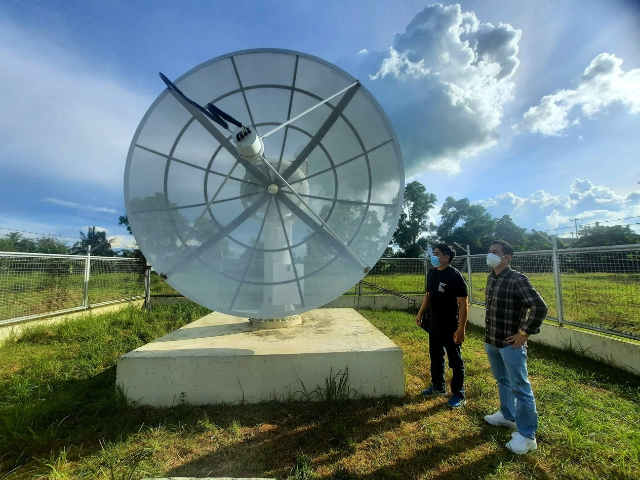The Department of Science and Technology (DOST) has just established a ground-to-satellite connection that promises to improve the country’s capability to forecast weather conditions.

The Iloilo Ground Receiving Station (GRS), the most recent addition to the country’s space infrastructure, has successfully communicated with the Diwata-2 microsatellite, thereby furthering the country’s long-term objective of expanding its nascent space technology sector.
The Climate Field School in Dumangas, Iloilo houses the GRS, which is equipped with a 3.5-meter Earth Observation satellite tracking antenna. Researchers from the Philippine Earth Data Resource and Observation (PEDRO) Center started testing for the antenna’s operationalization in 2019. The antenna was first installed in 2019. However, because to the limits imposed by the COVID-19 epidemic, testing of the antenna was delayed.
Improving weather forecasts
The GRS’ satellite tracking antenna was developed through a partnership between DOST-ASTI and Hokkaido University in Japan on the Understanding Lightning and Thunderstorms for Extreme Weather Monitoring and Information Sharing project (ULAT).
As an Official Development Assistance (ODA) initiative, the project is also undertaken in collaboration with the Japan International Cooperation Agency (JICA) and the Japan Science and Technology Agency (JST).
Meanwhile, the ULAT Project aims to improve short-term weather forecasts by examining rainfall and lightning patterns, facilitating safety and disaster response efforts. Meteorological satellites will be used to create 3D models of thunderclouds in order to enhance the monitoring of severe weather conditions.
“The Iloilo Ground Receiving Station can provide a larger network for easier and faster download of Diwata images. The target pointing capability of Diwata can be used to capture stereo-images of convective systems to better understand their evolution and structure during or at the onset of convection,” explained ULAT’s Ellison Castro.
GRS shakedown
A team of researchers led by DOST- Advanced Science and Technology Institute (DOST-ASTI) director Franz A. de Leon personally observed the functioning of the Iloilo GRS from July 27 to August 4, 2022. During the tour, the crew completed ground receiving station testing, validation, and starting operations and also met with the mayor of Dumangas to examine potential cooperation to improve service delivery.
“The operationalization of the Iloilo GRS is a welcome development, and it is a great addition to our existing space technology infrastructure. We wanted to establish a ground station on every major island in the country. With the Iloilo GRS in place, we now have stations in Luzon, Visayas and Mindanao. This will allow for greater operational flexibility and the needed redundancy of critical infrastructures,” de Leon said.




